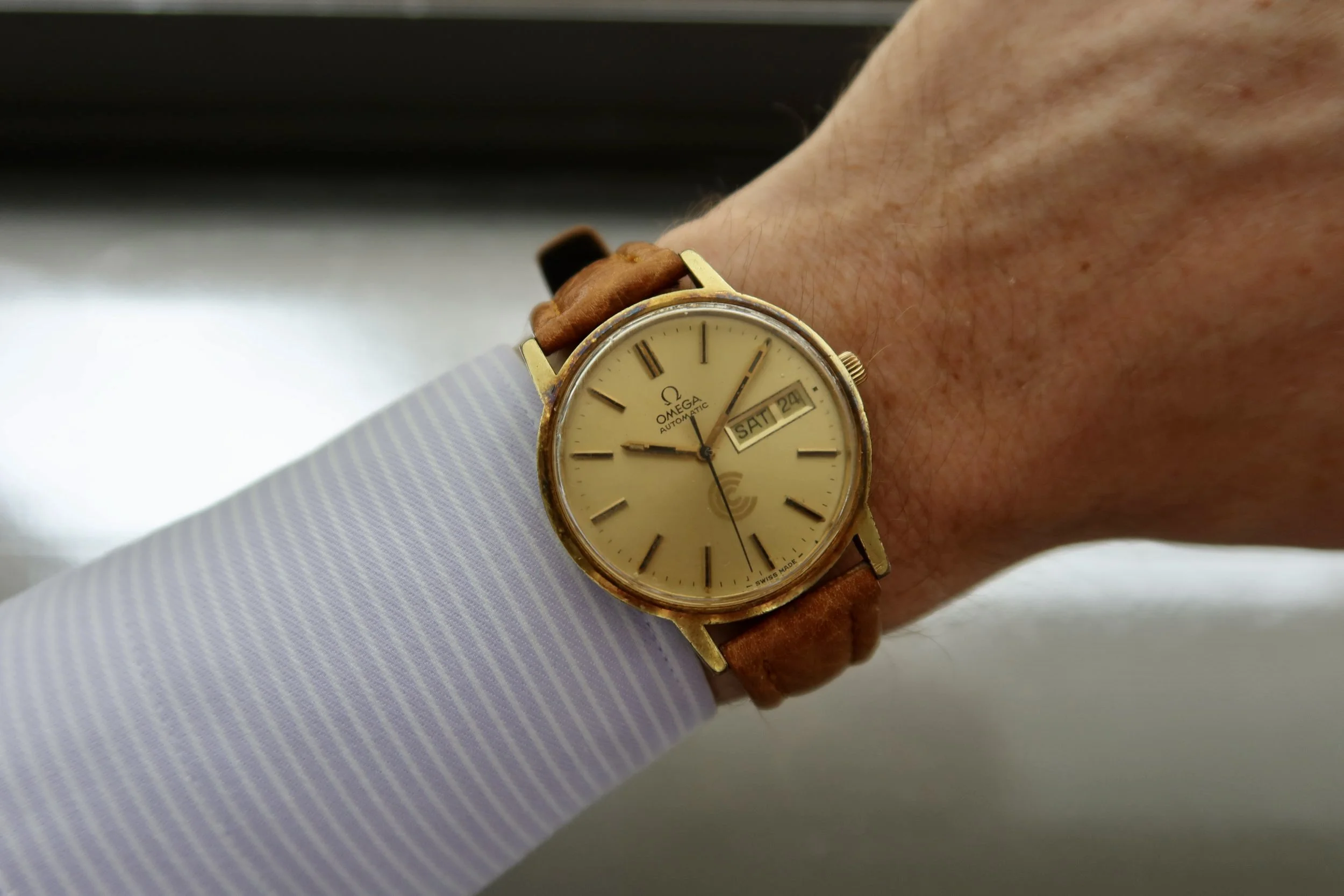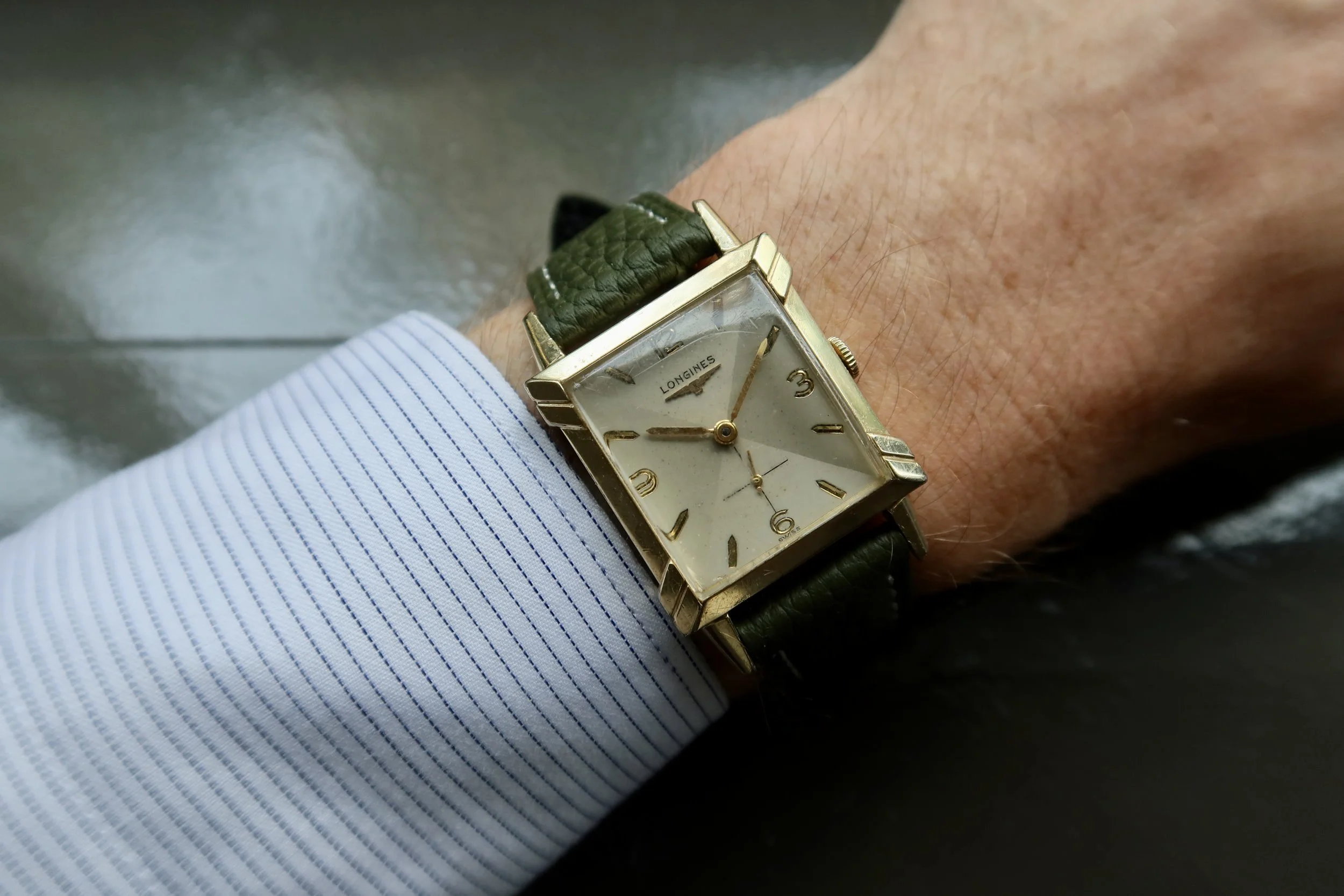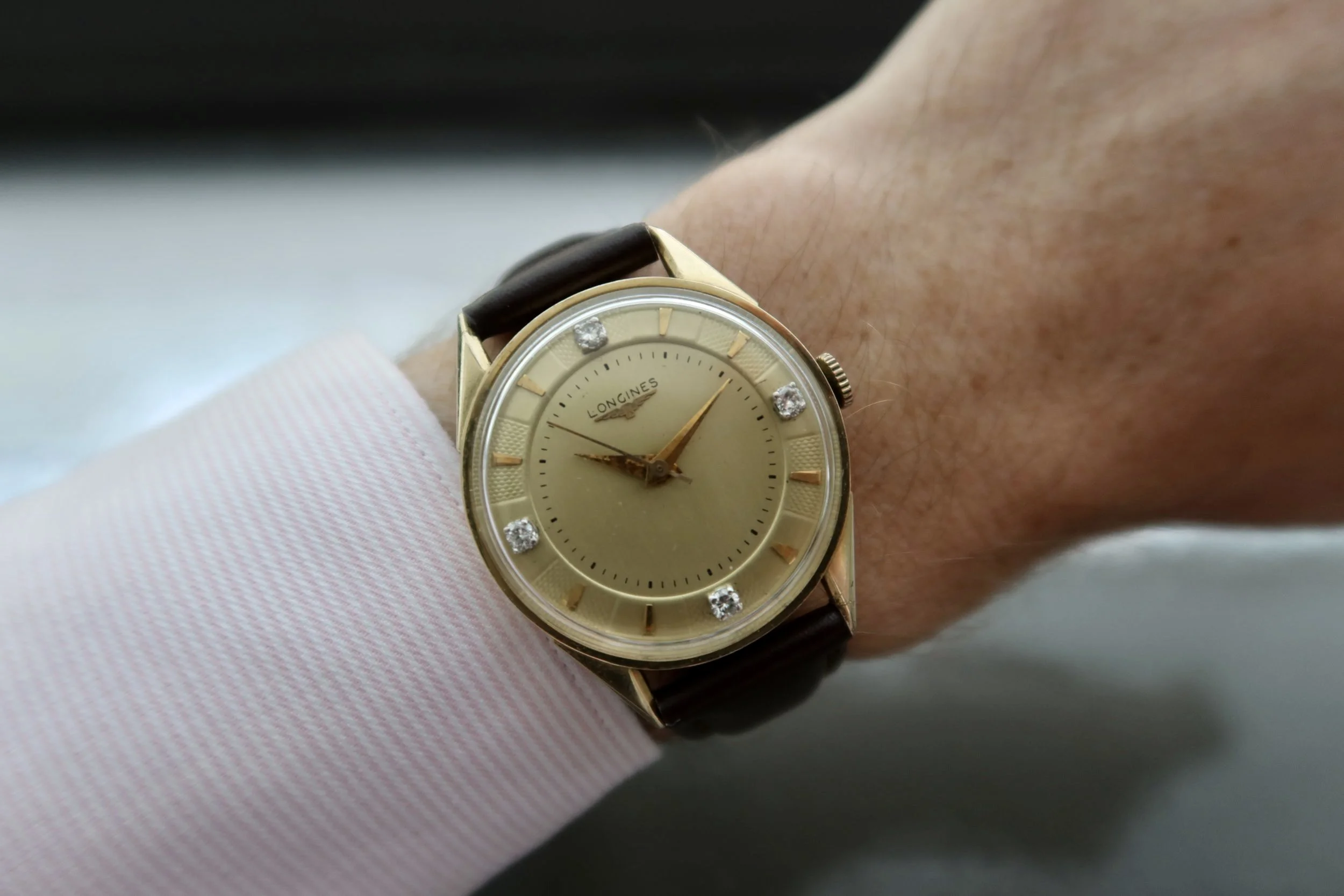The 1972 Omega Day Date Reference 1660117
To call a watch untouched is a big statement. Collectors are finding it harder and harder to find watches that truly have not been polished, cleaned, or altered from how it came from the factory. So it is hard to state that this Omega is untouched but to our eye, that is exactly what this Day Date is.
The watch is the reference 1660117 manufactured by Omega in 1972. The reference is part of the Geneve line watches that Omega produced along with other lines, such as the Seamaster, De Ville, and Constellation lines. Many collectors will point to the Seamaster and Constellation lines of watches as being more collectible. Mainly due to variation in dials, case, and lug design, collectors are able to explore these models much more broadly. So on the outset, this Geneve might fall into the trap of being too similar to other models. But what really is unique about this specific model is three fold; originality, patina, and provenance.
The reference 1660117 is an automatic watch introduced by Omega in 1972. The reference was produced throughout the 1970’s and featured an automatic movement, that ran a day and date complication. The dials of the watch had the two complications at 3 o’clock, the traditional location for these complications on many watches. This version has a champagne dial, with applied hour markers and lume plots. Lume was also applied to both the hours and minutes hands. The Omega logo and name are not applied, but printed on the dial. Normally, towards 6 o’clock, the word “Geneve” would be printed to mark which line of watches this went to, but instead, a “C'“ shaped logo is printed. More on that later.
On the description alone, the watch falls into the way collectors think of the Geneve line. But digging deeper is needed, which leads to a discussion on patina. First off, the case colour. The watch has a yellow gold plated case. But the yellow gold on this watch certainly looks different. It has developed a very unique patina. Now it has always been said that patina is subjective. Either the patina of a dial or patina of a case is liked by a collector or not. But it can differ so wildly with what collectors look for. Looking at the patina on the case, the watch looks to have a dark colour to it, which might not be appealing to many. This has formed because the gold has oxidized to create this colour.
But looking closer, one can actually see patches of the case that have a blue hue to it that looks very attractive. Parts of the lugs as well as the top of the case of the watch have a reddish hue to them which adds a whole additional layer and contrast with the very pristine champagne dial. If one moves on to the crystal, Omega’s of this era and earlier typically have replacement crystals. Crystals get scratched easily, and were regularly replaced. Omega left a nice secret on their crystals though to identify if they were Omega produced crystals. At the center, they would cut the Omega logo into the underside of the crystal. Picking up a loupe, one can clearly see the Omega logo on the crystal, pointing to the possibility of the watch having its original crystal.
The watch is running on the caliber 1020 movement. This movement was based on the Omega caliber 1010 movement, which only had the date function, but in the 1020 the day complication was added. The movements were first introduced in 1972 and produced until 1984, meaning the movement in the watch was one of the first to come out of the factory. The movement has the very typical “rose gold” tone finishing to it, which is actually a cooper alloy, but still looks so typical of vintage Omega. These movements can be tough to manage sometimes by watchmakers. Setting the tension on the cannon pinion, the piece that makes the watches hands rotate, can be difficult, and if set too tightly, can cause the teeth on the minute wheel to shear off. If there was too little tension though, the hands won’t be able to move through the date change. But of course, once done properly, the watch actually has a quickset function for both the day and date complications - a very useful piece of watchmaking with two complications.
Turning the watch over is where a fun bit of provenance is displayed. The stainless steel caseback has a hand-engraved dedication “For Loyal Service, ‘Peanut’ Hanus, 1974, Continental Can Co, Inc”. The inscription likely points to the sale and gifting of the watch in 1974 to an individual who worked for Continental Can Co. Continental Can Company was an American producer of metal containers and packaging based in Stamford, Connecticut. It was founded in 1904 and interestingly helped during World War II by building aircraft parts in their manufacturing plants. They were even involved in an anti-trust lawsuit in 1956 when they tried to acquire the third largest producer of glass containers. Most of the company was later sold and really is not in existence anymore.
After spending a considerable amount of time researching who “Peanut” Hanus could be, unfortunately no record could be found. There were individuals who worked for steel companies, doctors who had 16 patents, but none of them seemed to have an association with the Continental Can Company.
Nevertheless, the watch was gifted for loyal service. These gifts are seldomly given today, and something that defines the time period of the watch. It also adds a beautiful bit of history to this extremely unique looking, original watch.
Enjoy!







